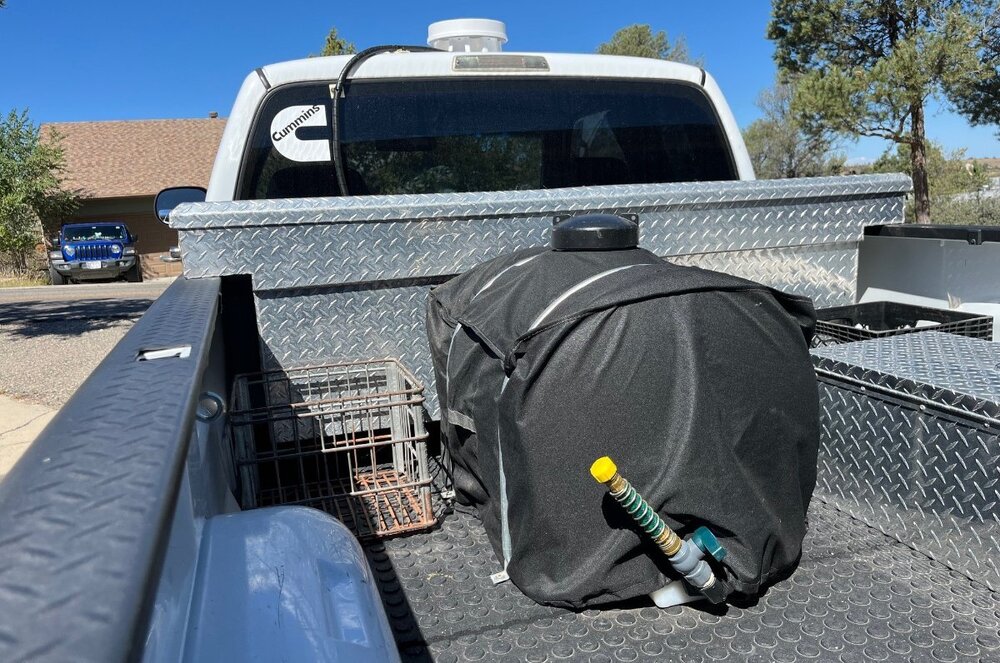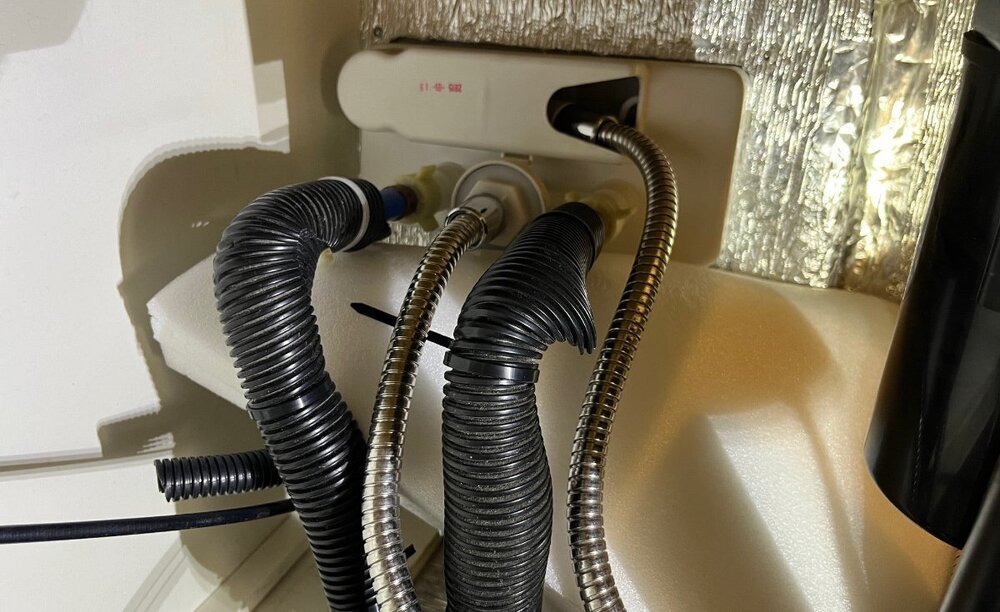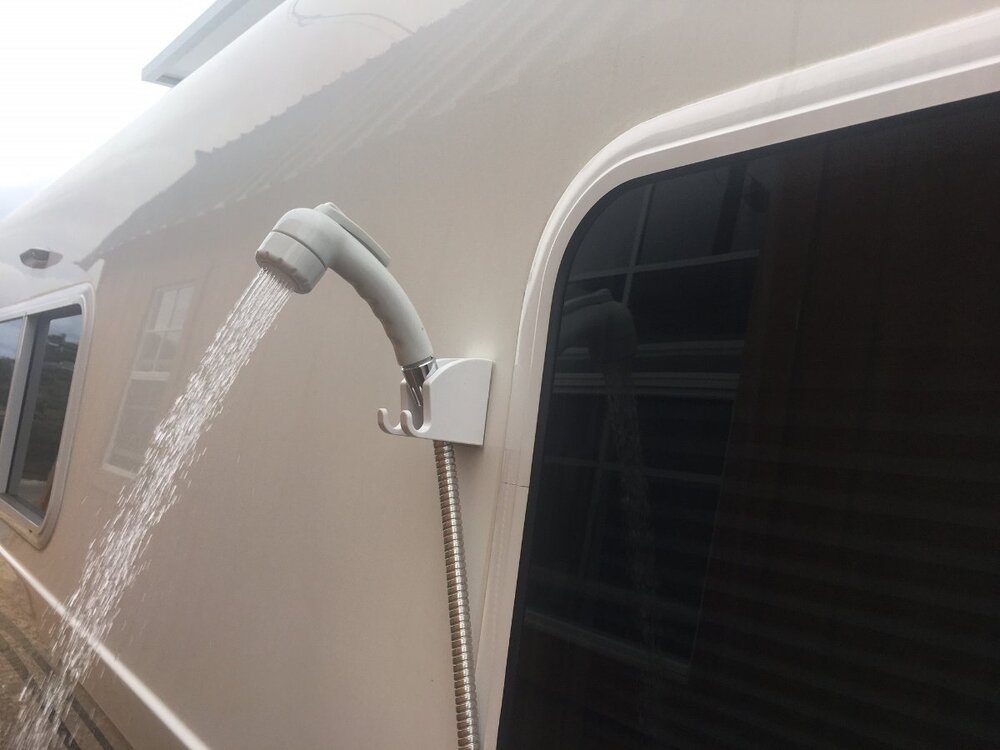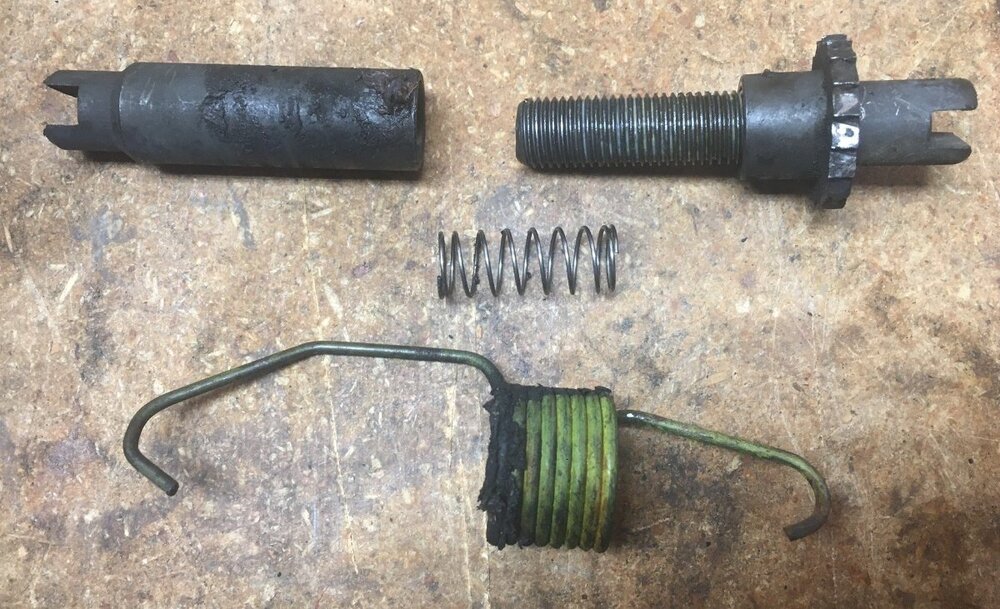-
Posts
2,954 -
Joined
-
Last visited
-
Days Won
206
Everything posted by jd1923
-

Wardrobe Shelving - A simplified approach
jd1923 replied to Geronimo John's topic in Ollie Modifications
That is a nice shelf, John. And yes it's a "simplified approach" which are the best designs! I had not thought of that space before, but yeah it is a void. I'm thinking now of maybe a couple of wire baskets back there for towels, if that would work on the curve. Hmmm...? (and the list gets longer, when I thought I had done enough in 2 years.) -

Andersen WD Hitch Periodic Maintenance?
jd1923 replied to Galileo's topic in Mechanical & Technical Tips
And the 2 5/16" ball will help. I just upgraded our Andersen ball to 2 5/16", new friction cone and Bulldog 12.5K coupler and will start a new post on that. Not going to grease our new ball since I can see what grease (from prior owner) did to the Andersen internals. -
A 300A should be between the battery + and the inverter and a fuse is much preferred over a breaker since it protect both sides, the batteries and the inverter, where a breaker is directional. Our Victron Multiplus specs a 400A fuse for this (ANL or better yet a Class-T fuse). A 60A breaker or less (40A or 30A depending on your equipment) would be used for internal circuits like the 12V fuse panel or solar chargers, etc. I don't see any need for a 100A breaker in the Oliver circuitry, but maybe they're doing something different in newer hulls.
-

Gorilla compact 25’ hose for marine and RV use
jd1923 replied to Patriot's topic in Mechanical & Technical Tips
It’s just nice even at a campground to not bother with any hookups. We have all the water and electric we need. Just dump gray every 5 days, black every 10, and where we Boondock most places we can drop some gray in the BLM or NF. -

Gorilla compact 25’ hose for marine and RV use
jd1923 replied to Patriot's topic in Mechanical & Technical Tips
These hand-held options don't work for us. We do not carry small water tanks to the rear of the Oliver. I fill a 35-gal FWT in the truck bed every time we fill water. With the onboard FWT full and our extra tank we can boondock, not worry about water for 10 days. I use a 25' and 10' rigid hose to connect the two while still being hitched. Fill about 18 gallons after a few days out and the rest of the tank after a week. I must use rigid hoses and never seem to have an issue stretching them out since I wind them in large 3' circles and curve them oval to fit in the Oliver trunk over other stuff. Flat hoses would be cool, but will not work for us! -

Gorilla compact 25’ hose for marine and RV use
jd1923 replied to Patriot's topic in Mechanical & Technical Tips
Keep one if you ever need to use the boondocking port. -

More DC to DC charger installation tidbits
jd1923 replied to Snackchaser's topic in Ollie Modifications
You are golden! My old Ram had 130A OEM, I replaced with a HO 180A and I’ve gotten as high as 48A outputted from our Orion XS 50A charger. -

More DC to DC charger installation tidbits
jd1923 replied to Snackchaser's topic in Ollie Modifications
Glad for you that David @Coddiwomple reached out. I could not answer for an EI. Also check into the amperage capability of the alternator on your Jeep. Some of us have had to upgrade that to guarantee available amps. -

Dexter Self Adjusting Brake - Fail
jd1923 replied to Galway Girl's topic in Mechanical & Technical Tips
Last year I purchased a Timbren bumpstop kit for the rear axle of my truck. When installing I had broken the u-bolt mount (a poor design since it did not fit flush and I had overtightened it not realizing this). I called eTrailer for a replacement part, thinking I would have to pay for it and/or shipping. The CSR took down my info, asked me to email a picture, and said she would speak to Timbren. She called me back the next morning reporting that Timbren approved sending me an entire new kit at no cost, no additional shipping. I got it in 2 days. That's why I continue to buy from them. I also purchased Timken bearings for the Oliver from them, knowing they would not be Chinese knockoffs! I don't see self-adjusters causing this issue in just 300 miles. I would first consider incorrect installation (which they would not admit) or perhaps the "bad batch" reason. Maybe they didn't get the top of the shoe on the post correctly. Also, smoke is not normal, or the shoe holders were not installed. And a minor smell of new materials can be expected, but visible smoke no! But who would think such a disaster would occur in just 300 miles. -
How did you attach it, fix it so it will stay put?
-
Rob, don't think or use torque values for rubber mounts. I've seen some pictures here that look right and some showing over-tightened bushings. You want to tighten them enough for the rubber bushings to pillow nicely, not enough so that the rubber will mushroom beyond the mounting plate which will cause premature failure of the bushings. The nuts are Nylok locking nuts so they will stay put.
-

More DC to DC charger installation tidbits
jd1923 replied to Snackchaser's topic in Ollie Modifications
Make sure you purchase the Orion XS 50A charger that was not yet on the market when Geoff worked his install. I detailed my installation and charging performance. We love it, no more SOC% worries. Watch video to see why to spend on the 50A model and check out other installations. See mine below and there are at least 4 on this forum (search for Orion or DC-DC). -
That hose must have been wrapped around the jack on purpose. The dang hose gets caught on something always. OTT should have it in a holding tube so that it can be pulled out and back in smoothly. OTT installs the shower head with hard 90 degree PEX and our gets caught on that often. I have to get under my bed AGAIN to free it before our next trip. I've wrapped the 90s with loom and it hasn't helped. I need to figure out something else this time. I need the FULL length of the hose to fit it into an exterior mount I added to get it held above my head height! Like to shower outside whenever we're boondocking in decent weather. The inside shower isn't tall enough and I prefer not getting the bathroom wet. Our wet-bath shower is mainly for Chris. I've only used it a few times.
-

Replace Colorado Carefree Awning
jd1923 replied to chuckstovall's topic in Mechanical & Technical Tips
Ours too, and like Mike’s and Steve’s still in very good cosmetic and working condition. I find it a pain to use and honestly have only used it once in our 2 years. I usually just park so that our entrance side is in the afternoon shade. We enjoy morning sun with coffee. I would likely use an electric model more often. If ours were to fail though, I would just remove it and all the brackets, patch the fiberglass, and the Oliver would look so aerodynamically cool! 😂 -
I kinda miss grass... But then I'd need the tactor back I sold when leaving Virginia 20 years ago. Out here we mow the desert weeds with a push string trimmer and weedwacker. We need our occasional rains, but hate that it makes stuff grow... and wet grasses means bugs, we truly appreciate being without... Oh humbug! Wow, what a beautiful spot, Ken and Mary Kay! Hope our paths cross again soon. We're heading to Minnesota and back leaving in 2 weeks. Maybe we might... Enjoy!
-

Dexter Self Adjusting Brake - Fail
jd1923 replied to Galway Girl's topic in Mechanical & Technical Tips
eTrailer has always been good with customer service. I try to buy from them whenever they are competitive in price. Self-adjusters on drum brakes have gotten a bad rap on this forum starting years ago with @John E Davies. I argued with him two years ago that I'd rather have self adjusters. If you go without self adjusting, you better jack your wheels off the ground and remove wheels or get under your trailer to the adjusting port on the backside of the braking plate and adjust each one manually before every long road trip. Not me. I've owned at least 10 old cars, worked full restorations of brakes systems and everything else and self-adjusting drum brakes are standard equipment on every post-war car into the 80s, and btw my 2001 Dodge Ram has rear drum brakes. I adjust them regularly by driving in reverse and applying the brakes 5-6 times and they get tight again. I learned on this forum from others that trailer brakes self adjust goin forward instead. The shoes eTrailer replaces will be no different. You will just need to replace the item pictured without the self-adjusting gear. Likely a simple replacement part, check John E's old posts. I imagine something else went wrong with Craig's brakes, but would not know unless I disassembled everything myself and was lucky to find the causal issue. -

Dexter Self Adjusting Brake - Fail
jd1923 replied to Galway Girl's topic in Mechanical & Technical Tips
Yep, almost every time I've contracted work, gone to a service facility, I'm sorry. Occasionally I'm surprised but a rare case. And we know Craig, you do excellent work in Oliver mods and repairs. -
When you use the built-in LP furnace as designed, air is circulated through the basement (a few added vents as seen in other posts will help). Winter is generally not a humid time of year when running heat inside. When we lived in Chicago, we would add water in the pans above the radiators to make inside of the home bearable. Forced air systems, forget about it! Why cause humidity with one device and then have another to correct the self-made issue? Also a lot of extra stuff to carry! Use of space heaters are also know cause for basement plumbing freezing that has been noted in a few other posts lately. Space heater will only heat the inner-upper shell and not much more.
-
Yep seems odd at first and the you'll learn to love them. And no more banging door in the wind creating the interior stress cracks!
-
Dan, you are correct. I have not measured it but I'm 6'2" and if I stand up straight, the top of my head will fully contact the bathroom ceiling. So it's 6'2" or just a bit shorter. I was never interested in those fancy teak wood covers for the shower floor as that would lose another 2". I can almost lay flat on the bed if it wasn't for the curved corner. I'm a side-sleeper most of the time so the bed just fits but it's tight.
-

Gorilla compact 25’ hose for marine and RV use
jd1923 replied to Patriot's topic in Mechanical & Technical Tips
Anybody know of this style hose in 5/8” or 3/4” ID? On second thought, I don’t think we could use a flat hose. We have a 10’ hose and water filtration system with a 4’ hose attached. When at a campsite with water, this 15’ length is all we need. Then we have a 25’ hose when a longer reach is required. I need the 25’ plus 10’ hoses to reach from our truck 35-gal water supply to the Boondocking port. This is where a flat hose will not work since you cannot pull water through a flat hose. We fill this way more often than we connect to campground water. I've found if I wind the hose in large 3’ dia loops, squeeze it oval shaped to get it into the Oliver trunk, it unwinds nicely. If you coil tight, it’s hard to get the hose to lay flat. -
🤣... 🤣... 🤣... ...
-
The main reason to go with an Oliver! When you get yours, please show me how this is done... 🤣(looks like we failed to convince you in another thread) Just celebrated my 70th birthday and no retirement plans here! I enjoy working my parttime semi-retirement job (contract instructor for the last 10 years) and hope to continue in good health for many years to come (vocal chords keep working)! Though I haven't punch a clock, 40+ hours a week, most of my life. Most of our friends in town are retired and they do about the same thing everyday (boring)! If I'm not working for my job, I'm always working on something else and I love it! We've enjoyed 47 overnights in our Oliver over the last 6 months and leaving for a 5-week trip just after Memorial Day, back home by the 4th of July! 47 overnights in 6 months days comes to 25% time away in our Oliver! If it was any more time cooped up in an Oliver, that becomes the job. That's just me, and Chris & I love sharing this life together!
-
All the points you made are good, but don’t fool yourself that the experienced engineer in you will not come to surface in retirement. You will retire but your mind should still be active. For example… You can buy the OTT Platinum Package or save near $10K and install a Victron inverter/charger system with your own LiFePO4 battery choice! 🤣 I imagine you’ve followed the Mod section of our forum. Either way, you made the right choice in choosing Oliver. Welcome to the club!
-
What’s the SKU or part number on Advance Auto? I’ll order a set for next time. Never mind, I couldn't see the number on my phone but can now on my laptop. Part # HD1213-0656









